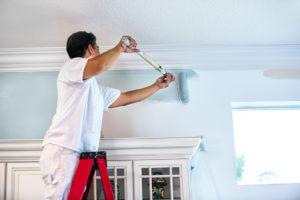As families change and grow, so does the size of the home. Building a new addition in Florida means creating more square footage that must be cooled in the year-round heat. Any new addition onto a home may mean that the central cooling unit needs to be upgraded; all additions require a professional diagnosis of the system as a whole. A homeowner must understand if a new system is necessary, how the different options work, how to choose the right system, and how to keep cooling bills low in the sometimes brutal Florida sun.

When Is a New System Necessary?
Only a professional can assess if a new system will be necessary to cover the added square footage. This is why a basic energy audit is essential as part of the addition plans. The audit will include cooling for the current home, and an estimation for the addition, so be prepared to share addition plans with the cooling professional. The estimation will help determine if the current cooling system will be able to handle the new space, or if a new system will need to be installed. This information will also help determine the size and construction of the addition, as the cost of cooling the area will have an effect on how much can be built. If the audit determines that a new HVAC system is necessary, that cost must be added into the overall cost of the home modification. Either the system will need to be replaced, or a ductless mini-split system, or other smaller type of system, will need to be installed.
Considering the Options
If the existing cooling system just won’t cut it with the new rooms, there are some options to consider. The range of A/C systems includes zoned, room, central, and evaporative cooler, all which effectively cool an area when maintained properly. The zoned unit, also known as the ductless mini-split, will provide cooling without ductwork, and is mounted on a wall. Many Floridians choose this option as it is among the most cost efficient to install. A room unit provides spot cooling, and is mounted in a window or comes through a portable unit. The central unit relies on duct systems to move the air throughout the whole home. This is one of the most expensive installs, but the most convenient and energy efficient. The evaporative cooler pulls outdoor air into the space, cooling your home through evaporation methods. This is also known as a swamp cooler. The right option is the one that fits into the budget, cools the new area, and remains efficient. Some homeowners choose a new cooling system for the addition alone to avoid changing the structure of the home with ductwork.
Other Factors to Consider in Choosing the Right System
Budget is often a deciding factor in choosing a system to cool an addition. However, it’s important to consider the amount of money saved over time with the right cooling system. After the addition is completed, the existing system will begin to work harder to cool more space. This will increase bills and wear down the unit faster. This long-term money loss is exactly why the cost of cooling the addition must be figured into the overall budget for the project. The existing cooling system must also be considered in more than its current effectiveness. Are the residents of the home happy with the current system? Does it keep the home as comfortable as desired? Will it be as effective in the new rooms? An addition to the home is a great opportunity to add ductwork throughout the new walls and to consider or update the current A/C system.
Tips in Lowering Overall Cooling Costs
As space is going through changes, consider the following tips to help reduce the cooling cost over the long term and continue cooling your home for years:
- Use a programmable thermostat.
- Use ceiling fans to help move air.
- Take this opportunity to add extra insulation to attics and air ducts. Seal any cracks in the home.
- Use an outdoor grill during Florida’s hottest days. Avoiding indoor appliances will help the A/C do its job.
- Cover windows with energy-efficient material. This will let in light while blocking solar rays.
- Use the fans in the kitchen and bathroom to help remove humidity from the home.
These tips will keep the A/C unit working longer, and will reduce energy bills. The new rooms will be as cool and comfortable as the rest of the home.
Determining the specifics of an air unit is easier with a professional consultation. The type of unit, ways to increase efficiency, and the real cost of cooling the addition will be determined during an estimation. Contact Mahle Cool Air in Venice to begin the consultation process for your new addition. Call or Text (941) 203-7955